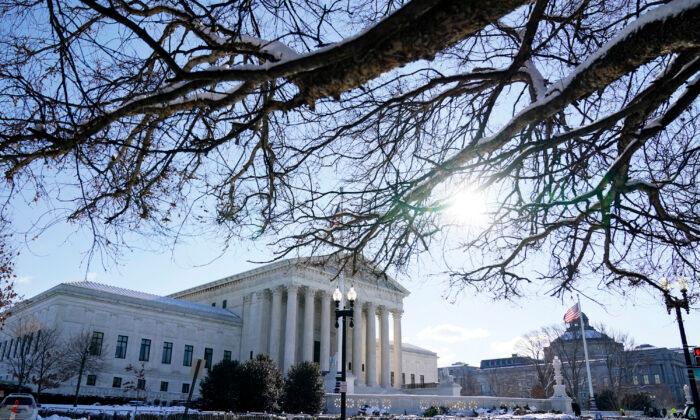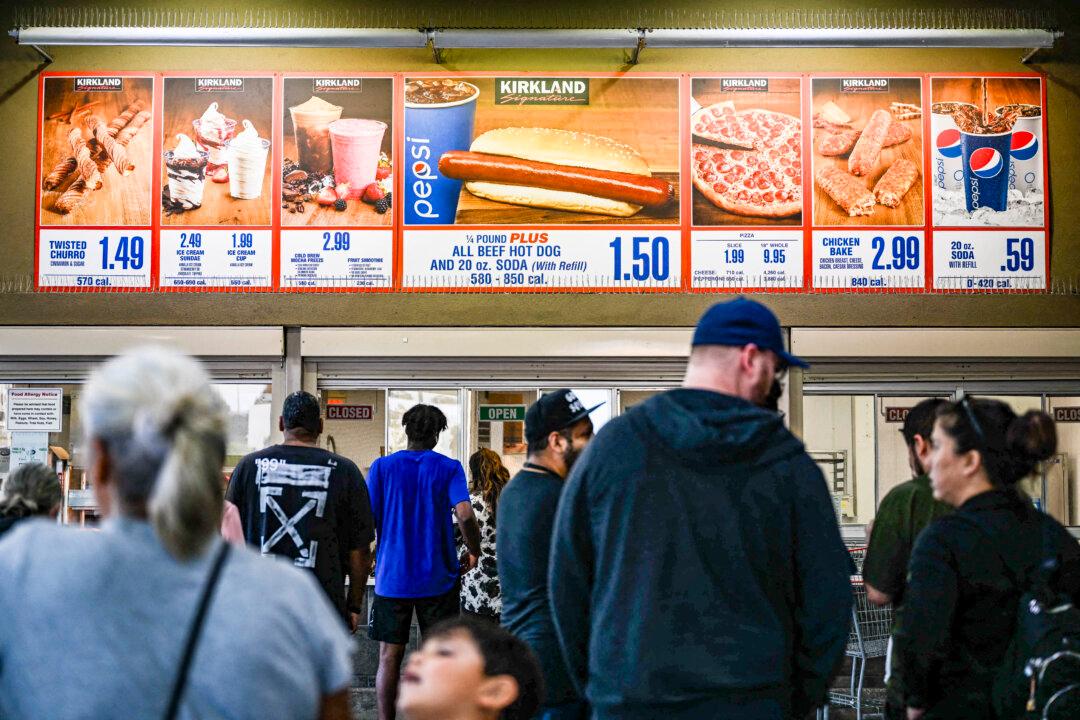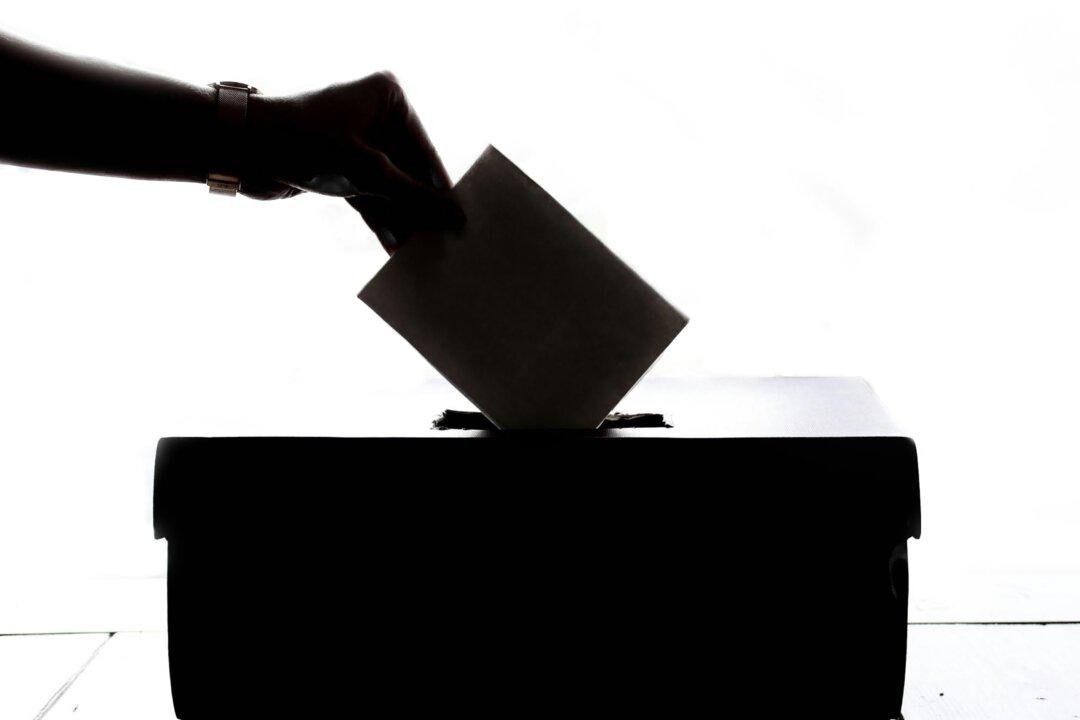What shouldn’t be overlooked, however, was the chilling peek into the mindset of the left that was provided in the Democratic-appointed justices’ dissents.
They want maximum—if not exclusive—federal involvement and direction, and a minimum state and local self-governmental role.
As Justice Neil Gorsuch noted in his concurrence, “If Congress could hand off all its legislative powers to unelected agency officials, it ‘would dash the whole scheme’ of our Constitution and enable intrusions into the private lives and freedoms of Americans by bare edict rather than only with the consent of their elected representatives.”
But in their dissent, Justice Stephen Breyer, appointed by President Bill Clinton, and Justices Sonia Sotomayor and Elena Kagan, both placed on the high court by President Barack Obama, said of their six colleagues in the majority, “Acting outside of its competence and without legal basis, the Court displaces the judgments of the Government officials given the responsibility to respond to workplace health emergencies.”
Breyer, Sotomayor, and Kagan complained about the majority’s use of the term “vaccine mandate” because President Joe Biden’s OSHA order gives businesses the option of requiring their employees to wear masks, which isn’t very far removed from touting life in prison because the warden provides a menu with two culinary options for the inmates at every meal.
To these three justices, the benefit of the doubt always favors governmental intrusion into Americans’ lives. They contend that “nothing in the Act’s text supports the majority’s limitation on OSHA’s regulatory authority.” And for the Supreme Court to restrain such intrusion “substitutes judicial diktat for reasoned policymaking.”
What of the outrage and resentment of the workers who have made the decision to refuse a new vaccine, who feel their rights trampled, and who are even willing to leave their jobs?
“The employers principally argue that the Standard will disrupt their businesses by prompting hundreds of thousands of employees to leave their jobs,” the three justices noted. “But OSHA expressly considered that claim, and found it exaggerated. According to OSHA, employers that have implemented vaccine mandates have found that far fewer employees actually quit their jobs than threaten to do so.”
The obvious implication is that if governmental bureaucracy is forceful enough, popular resistance can be mostly thwarted.
The justices’ bias toward and trust in the judgment of the bureaucracies is staggering. They remark that “as long as the pandemic continues, so too does the risk that mutations will produce yet more variants—just as OSHA predicted before the rise of Omicron.”
So OSHA is, apparently, a medical authority.
The choice in the eyes of Breyer, Sotomayor, and Kagan isn’t between governmental regulation and personal liberty but between the various sectors of the federal government leviathan.
“Underlying everything else in this dispute is a single, simple question: Who decides how much protection, and of what kind, American workers need from COVID–19? An agency with expertise in workplace health and safety, acting as Congress and the President authorized? Or a court, lacking any knowledge of how to safeguard workplaces, and insulated from responsibility for any damage it causes?”
This would be hilarious in light of the long history of judicial imperialism, were it not so sinister. In 1973’s Roe v. Wade case, for instance, the Supreme Court unilaterally decided that it had enough knowledge of obstetrics, existential philosophy, and religion that it could impose regulatory guidelines upon every woman’s pregnancy and throw out the democratically approved abortion laws of all 50 states.
“The agency has thoroughly evaluated the risks that the disease poses to workers across all sectors of the economy … informed by a half-century of experience and expertise in handling workplace health and safety issues,” the three justices argue. Apply this to an individual patient. Imagine a government bureaucrat informing you that “the agency has thoroughly evaluated the risks [of] the disease” you have contracted, and that it has decided on your course of surgery and medicinal treatment, rather than allowing you your own personal choice.
The justices also contend that Biden’s OSHA mandates have “the virtue of political accountability, for OSHA is responsible to the President, and the President is responsible to—and can be held to account by—the American public.”
The three assert that “[w]hen we are wise, we know not to displace the judgments of experts.” Their confidence and pride in the supposed ability of a powerful government bureaucracy to regulate our lives with positive outcomes should terrify both business owners and those employed by them.
As Justice Clarence Thomas stated in his dissent on the 5–4 ruling that allowed the Biden vaccine mandate to be imposed on government health workers, joined by Justices Alito, Gorsuch, and Barrett, “the Government proposes to find virtually unlimited vaccination power, over millions of healthcare workers” within regulations pertaining to other matters. The mandate “requires millions of healthcare workers to choose between losing their livelihoods and acquiescing to a vaccine they have rejected for months.”
As Thomas and the three others noted, the mandates “fall squarely within a State’s police power, and, until now, only rarely have been a tool of the Federal Government. If Congress had wanted to grant CMS [the Centers for Medicare and Medicaid Services] authority to impose a nationwide vaccine mandate, and consequently alter the state-federal balance, it would have said so clearly. It did not.”
Alito, in a separate dissent joined by Thomas, Gorsuch, and Barrett, stressed the absence of democratic accountability, noting that “[u]nder our Constitution, the authority to make laws that impose obligations on the American people is conferred on Congress, whose Members are elected by the people. Elected representatives solicit the views of their constituents, listen to their complaints and requests, and make a great effort to accommodate their concerns.
“Today, however, most federal law is not made by Congress. It comes in the form of rules issued by unelected administrators.”
To Breyer, Sotomayor, and Kagan, the experts within federal agencies, and not the voters, are the ones whose views count.
“Today’s decision will ripple through administrative agencies’ future decision-making,“ Alito warned. ”The Executive Branch already touches nearly every aspect of Americans’ lives. In concluding that CMS had good cause to avoid notice-and-comment rulemaking, the Court shifts the presumption against compliance with procedural strictures from the unelected agency to the people they regulate.
“Neither CMS nor the Court articulates a limiting principle for why, after an unexplained and unjustified delay, an agency can regulate first and listen later, and then put more than 10 million healthcare workers to the choice of their jobs or an irreversible medical treatment.”
That the left-leaning justices have little shame in utilizing politicized, incendiary rhetoric in the public eye in service to optimum federal power was at its most blatant in Sotomayor’s false assertion during oral arguments on Jan. 7 that “we have over 100,000 children, which we’ve never had before, in serious condition, and many on ventilators” and that “Omicron is as deadly as Delta.” Even sympathetic media outlets swiftly pushed back, with The Washington Post’s fact-checker bestowing four Pinocchios.
Not to be outdone, Kagan asserted that workers “have to get vaccinated so that you’re not transmitting the disease,” despite the vaccinated transmitting and contracting Omicron like crazy; and Breyer contended that there were “750 million new cases”—over twice the population of the United States.
It all serves as a grave reminder that had Senate Republican Leader Mitch McConnell and President Donald Trump not prevented what would have been a 7–2 left-leaning majority in the Supreme Court (assuming Chief Justice John Roberts would often vote left of center), there would now be no check on the federal government’s control over individuals and businesses, in sharp defiance of the constitutional foundations of America’s freedoms.





